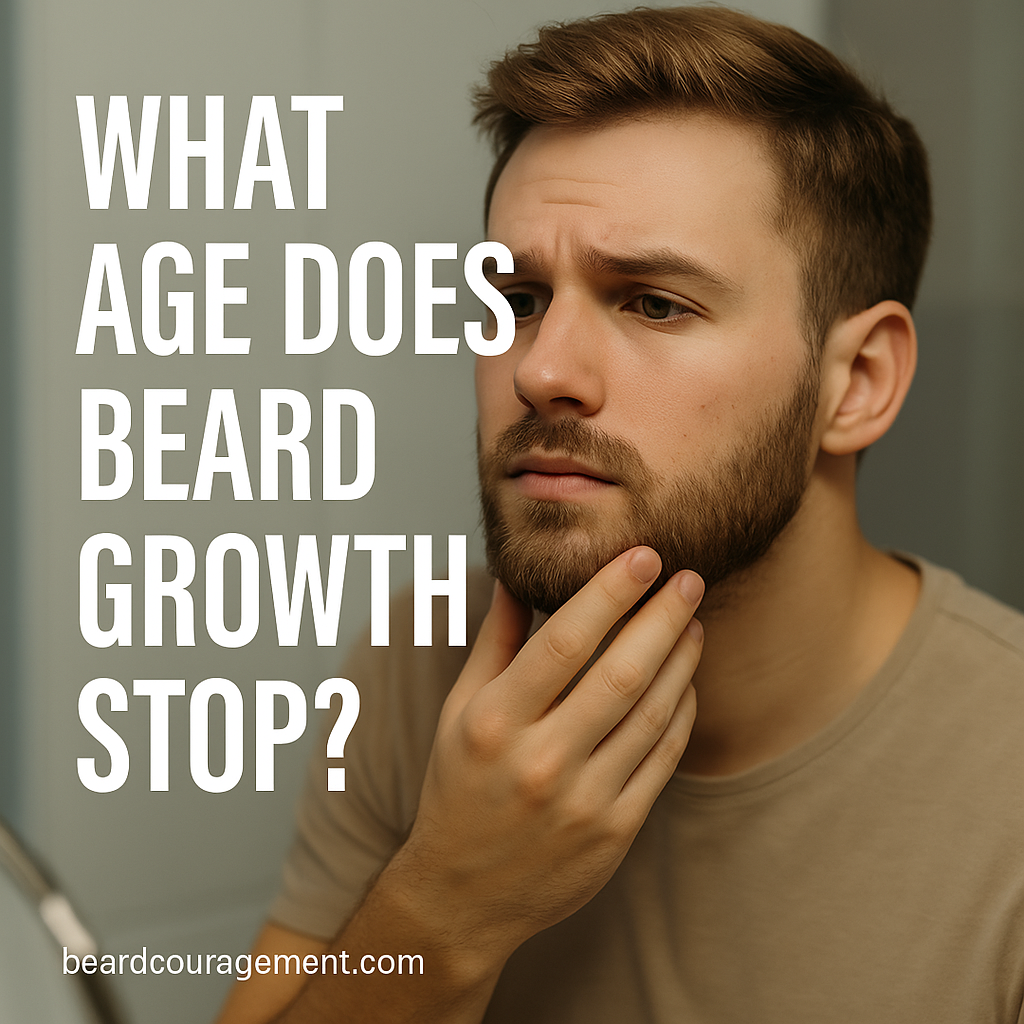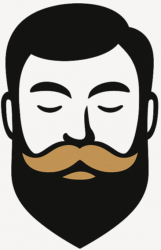
If you’ve ever looked in the mirror and wondered whether your beard has reached its full potential, you’re not alone. Many men question when beard growth actually stops — and the answer might surprise you.
Beard growth doesn’t have a strict cutoff point. It varies greatly from person to person and can continue improving well into your 30s or even 40s.
Let’s explore how beard growth evolves with age, what affects it, and why patience and care often make the biggest difference.
Understanding Beard Growth Stages
Beard growth is tied to hormones, genetics, and age — particularly testosterone and its byproduct, DHT (dihydrotestosterone). These hormones activate hair follicles on the face, turning fine “vellus” hairs into thicker, terminal beard hairs.
Here’s what typically happens by age range:
Ages 13–17: The Early Stage
During puberty, beard growth begins — but it’s uneven. Most teens notice faint upper lip or chin hair before anything else. This stage is defined by patchiness and slow development, which is completely normal.
What to expect:
- Sparse coverage
- Light or soft hair texture
- Uneven growth patterns
Tip: Avoid shaving too frequently to “stimulate” growth — it’s a myth. Focus on skincare and nutrition instead.
Ages 18–25: The Development Stage
For most men, facial hair becomes more consistent during this time. Testosterone levels rise, and follicles mature, leading to thicker, darker growth.
What to expect:
- Beard fills in across cheeks, chin, and neck
- Growth rate increases
- Texture becomes coarser and more defined
However, even in your early 20s, some areas (especially cheeks) may still lag behind others — patience is key.
Ages 25–35: The Peak Beard Years
This is when most men reach their full beard potential. Hair growth density, thickness, and coverage typically maximize during this stage.
What to expect:
- Strong, consistent coverage
- Defined growth patterns
- Slower but steady continued development
Many men notice their beards improving even in their late 20s — sometimes after thinking they had “patchy genetics.”
Pro Tip: A solid grooming routine — washing, oiling, brushing — helps your beard look fuller and healthier during this prime stage.
Ages 35–45: Gradual Plateau
By the mid-30s, most beard follicles have reached maturity. Growth rate might slow slightly, but beard density and texture remain stable.
What to expect:
- Thicker beards maintain shape and volume
- Slight slow-down in growth rate
- Occasional gray hairs appearing
This stage often brings a beard that looks its best — thicker, well-shaped, and full of character.
Ages 45 and Beyond: Subtle Changes
Beard growth doesn’t “stop,” but it can change. Hormone levels naturally decline with age, which may cause slower regrowth or softer texture.
What to expect:
- Slightly thinner or finer hair
- More gray or white strands
- Consistent but slower growth cycle
Despite slower growth, many older men enjoy more manageable beards and a distinguished, mature look.
Factors That Influence Beard Growth Duration
1. Genetics
Your genes largely determine how thick and fast your beard grows. If your father or grandfather had full beards, you’re more likely to develop one too — though timing can still vary.
2. Hormones
Healthy testosterone and DHT levels are essential for beard growth. Exercise, sleep, and proper nutrition all support hormonal balance naturally.
3. Nutrition and Lifestyle
A diet rich in protein, vitamins (A, B, D, E), and minerals (zinc, iron) supports strong, healthy growth. Hydration and good skin care also help follicles function properly.
4. Stress and Sleep
High stress or poor rest can negatively impact beard health. Both lower testosterone production, slowing down your growth cycle.
Common Myths About Beard Growth and Age
Myth 1: Beard growth stops after your 20s.
Fact: Many men continue developing thicker beards into their 30s and beyond.
Myth 2: Shaving makes your beard grow faster.
Fact: Shaving only affects the tip of the hair, not the follicle. Growth rate and density come from within.
Myth 3: If you can’t grow a beard by 25, you never will.
Fact: Some men see late-stage follicle activation well into their 30s — especially in patchy or slow-growing areas.
How to Support Your Beard Growth at Any Age
Even though genetics play a major role, you can help maximize your potential:
- Eat well: Include protein, vitamins, and healthy fats.
- Exercise regularly: Boosts circulation and hormone levels.
- Use beard oil: Keeps hair soft and encourages healthy growth.
- Be patient: Growth cycles take time — visible progress often comes in months, not weeks.
Final Thoughts
There’s no set age when beard growth officially stops — it simply evolves. For most men, beard development peaks in the 30s, then gradually stabilizes.
The key is to focus less on the calendar and more on consistency. Good care, healthy habits, and patience will do more for your beard than age alone ever could.
Because great beards aren’t about when they grow — they’re about how well you nurture them along the way.
